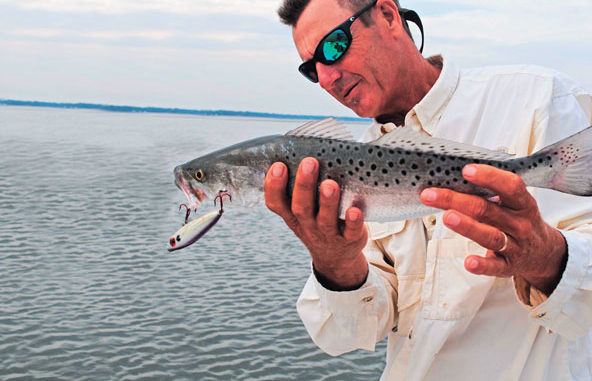
Beaufort River offers plenty of hotspots for trout, redfish and flounder while the cobia run is going gangbusters.
When the month of May and the area around Beaufort are spoken in the same sentence with the word “fishing,” one other word generally follows: cobia.
Yes, the Port Royal Sound and Broad River have one of the most-famous spring cobia runs on the entire South Atlantic coast, and there are times when you motor into the river and the flotilla of boats reminds you of the U.S. Navy’s Pacific Fleet at Midway Island in WWII.
What’s interesting is that fishermen who don’t target cobia are thrilled to see May approach and arrive, because that cuts down on the number of boats competing with them for the area’s excellent speckled trout, redfish and flounder.
Danny Rourk of Tailwind Charters in Beaufort loves to fish for cobia, especially sight-casting to big fish as they wander up the Broad River. However, he’s just as thrilled to see the wakes of a pod of redfish cruising a mud flat, pushing here and there, trying to roust a fiddler crab from its lair, or feel the slash of a big speckled trout jerking a popping cork under the surface.
And May is the month when bait of all kinds starts showing up for the first time.
“We have minnows here all the time, but the shrimp start showing up around the end of May and the first of June, and the pogies (menhaden) arrive when the water starts warming up, and that’s usually in May,” said Rourk (843-263-3863).
“I start catching trout in May; I think this year I’m going to try some more topwater baits in the spring.”
In many areas up and down the South Carolina coastline, fishermen who target redfish are wary of the spring months because fish have broken out of their big winter schools and are harder to find — but easy to catch once you’ve found them. Rourk doesn’t think that’s a problem on his home waters, because there are so many slot fish — 15 to 23 inches — and they never really leave their “family” group.
“I’ve had people ask me, ‘Are the redfish schooled up yet?’” he said. “I think they hang together all the time. Those 18- to 20-inch fish, you can bet if you catch one, most of his brothers are pretty close by. They never get too far apart.”
And even more fortunate is the fact that Rourk can experience great action on reds, trout and flounder and not run a whole lot of fuel though his outboard motor. Without travelling more than 10 minutes from the Sands Landing at the tip of Port Royal, and almost without leaving the Beaufort River, he can put anglers in some great places to catch fish this month. Here are a few:
Parris Island Dock & Rock Wall
W 32 21 037/N80 40 134
Relatively close to Sands Landing, this is a spot unlike any other in the Beaufort River. To the south of a small pocket is a concrete dock and sea wall; to the north, it’s a long,
rip-rapped bank.
“The redfish and trout will cruise up and down the wall, especially on moving water,” Rourk said. “The bank drops off significantly; the rip-rap (line) ends at about 10 feet deep. What you see is what it looks like all the way along.”
Rourk said that fishing a live shrimp or baitfish under a popping cork is a perfect way to approach these two adjoining pieces of structure.
“Just let it drift downcurrent, but if it rides any distance away from the wall, you won’t catch fish, because it’s 15 to 20 feet deep one cast off the bank,” he said.
Rourk said trout and redfish are commonly caught here, along with sheepshead and black drum.
“You can also fish toward the bank on the right. There are some oysters, and they’re good to fish an incoming tide.”
Parris Island Boat Basin
W 32 20 232/N80 39 767
This waterway, aka Ballast Creek, was formerly a deepwater entrance to a boat basin used by the U.S. Marine Corps in its training. Now, the area surrounding the entrance is a tremendous place to catch fish. A huge oyster hump off the point on the right side of the entrance is key.
“It’s like a jetty that over the years has gotten shoals,” Rourk said. “It’s often my first stop; it’s a good place for trout, and the ditch is probably loaded with flounder.
“On an incoming tide, you want to stake down in front of it, throw up and let your bait drift off,” he said. “I will fish a popping cork with a 2-foot leader and a shrimp.
“The trout will be around the shells, and the flounder will be on the sides of the ditch. It’s also a good place to fish a topwater bait.”
Parris Island Point No. 1
W 32 17 437/N80 40 529
This point at the end of Parris Island sticks out a long way into the mouth of the Beaufort River, and it’s a great spot to catch speckled trout on the high end of the tide cycle.
“If you fish down the edge, it’s all shoals, and the trout will move in there on high water,” Rourk said. “The redfish will go back in the little bays. The right side of the little cut-through is also real good.”
Rourk said that a fisherman who’s a good caster can cover plenty of water with a soft-plastic bait on a jighead and catch fish, but suspending a live bait under a popping cork is probably the best way to fish this area.
“A cork will keep you from getting hung up on the shells, and I don’t think the splash bothers them this time of year,” he said. “I think it actually attracts their attention a little.”
Parris Island Point No. 2
W 32 18 185/N80 41 895
This point is more of a secondary point than the main-river point previously identified, although it is on the Broad River. Several hundred yards up the bank, fishermen will come onto a shell bank that juts off the bank.
“It’s a big shell bank, white shells, and you need to work around it, fish down the edges,” Rourk said. “Reds and trout will get on the white shell mounds out in front of it.”
Again, Rourk likes to drift a popping cork along the banks with a live shrimp or baitfish suspended underneath.
Parris Island Golf Course
W 32 18 597/N80 39 897
On the east side of Parris Island (and the west bank of the Beaufort River), a small creek drains the marsh surrounding the golf course; white stakes will outline the mouth of the creek. Rourk advises anchoring up in the mouth of the creek on a rising tide.
“You can drag the bottom in there; there are no snags,” he said. “You can throw grubs in there or float baits in there and catch trout.”
Rourk likes to fish as close to the marsh grass as possible.
“The bottom is sand and white shells, so you’re not going to get hung up,” he said. “If your bait is moving away from the grass, throw it right back up there again. Having it in the grass is better than having it be out away from it. You want that cork to drift back to you in the current.”
Drain Creek Rangefinder
W 32 21 015/N 80 38 927
Moving upriver and across the river, you’ll pass the mouth of three small drain creeks. The third one has a platform and tower. Fish it.
“There will be some trout in this area,” Rourk said. “I like to anchor in the mouth and work both sides. A lot of guys like to drift shrimp in here.
“It’s better on an incoming tide, but the fishing can be good on any kind of moving water.”
Mouth of Cat Island Creek
W 32 21 043/N80 39 417
This is another spot that fishes better on an incoming tide — for both trout and redfish, according to Rourk.
“There’s an osprey nest on a post at the mouth of the creek,” he said. “You want to fish around the spit; it’s shallow on the river side, and there’s a flat out in front of the creek.”
On a rising tide, the point breaks the current and sends it up Cat Island Creek and Cowan Creek, making the junction an especially good spot to fish.
Gibbs (Cane) Island
W 32 21 145/N80 40 332
This is the mouth of a small creek that drains an area of marsh just across the river from Port Royal.
“You want to stay in the mouth of the creek,” Rourk said. “You can catch trout and redfish on an incoming tide.
“You can fish artificials if you know how to work shell banks, or you can float a shrimp in below a cork.”
I. Gibbs Island Sea Wall
W 32 22 410/N 80 40 334
A dock marks the entrance to the south end of this bank, which is a mixture of rip-rap and manufactured sea wall — with grass out in front.
“I start at the dock and work all the way down the wall,” Rourk said. “I’d fish a shrimp all the way down the wall until you find the trout.
“This has a sand bottom, and it’s better on a higher tide, where they can work up and down the length of the wall, but look for the cleanest water to fish.”

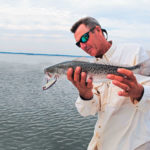
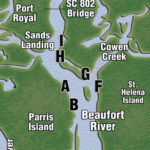
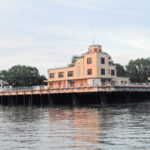
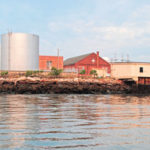
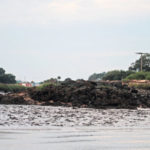
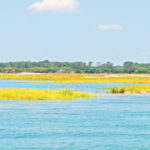
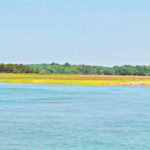
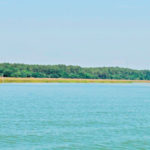
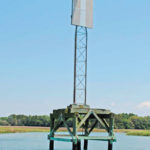
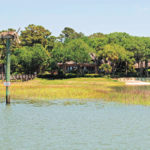
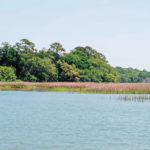
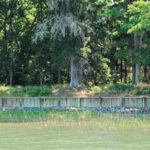




Be the first to comment